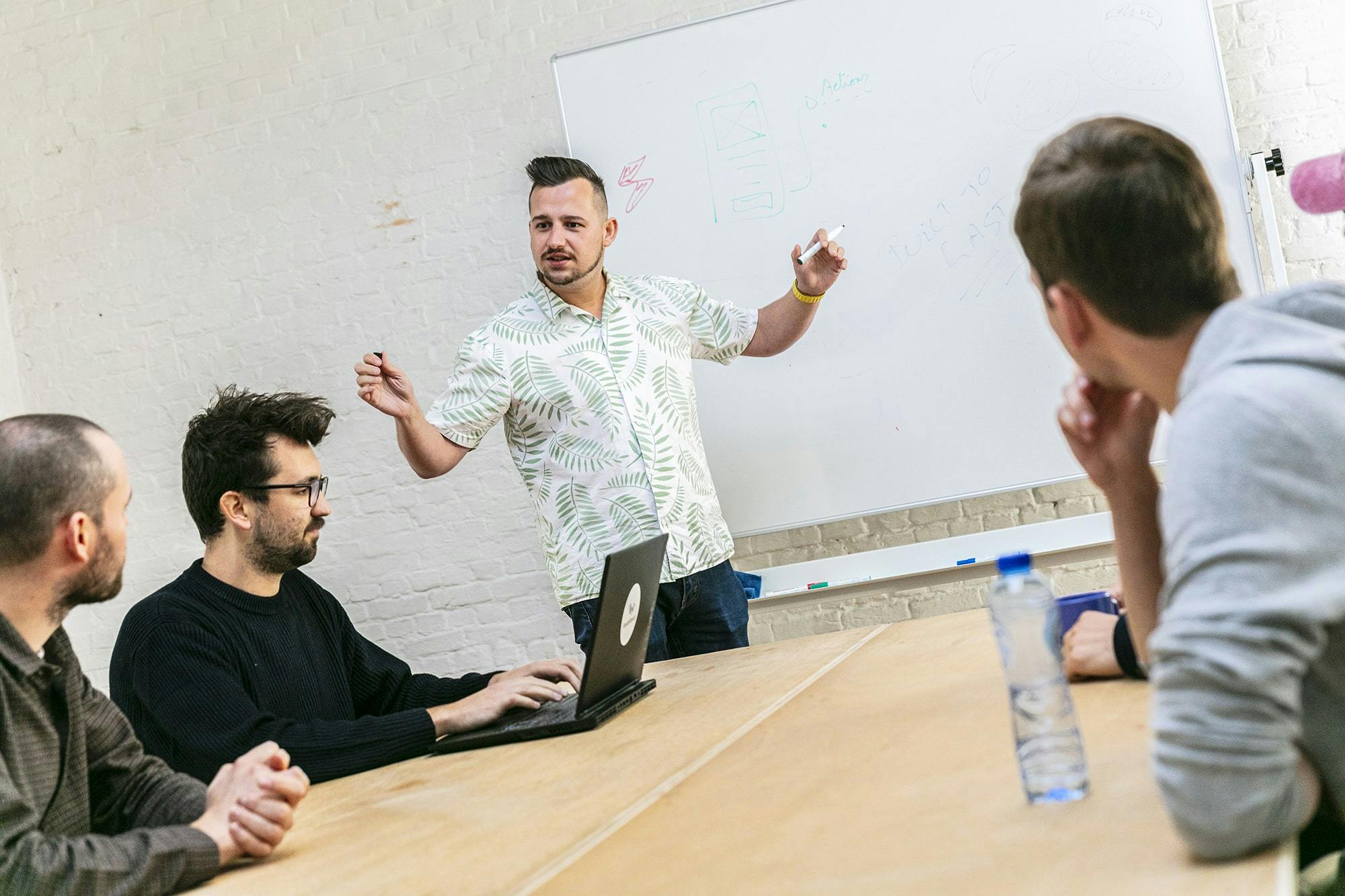
In this blog
In this blog, we delve deeper into:
- Understanding what makes a platform truly accessible.
- The importance of user research and user-generated feedback during a project.
- How it will become mandatory as of next year to have accessible platforms and the guidelines that go with them.
- The future of AI in accessibility promises even more transformative possibilities.
What Is an Accessible Platform?
Your platform is considered accessible if it ensures that all users, regardless of impairments and disabilities, can perceive, understand, navigate and interact with its content and features. There are a lot of things to consider here, from suitable alternative text for your images and video captions to perfect keyboard navigation and compatibility with screen readers. Whew, so it's quite a chore, yes, but worth it in the end, trust us.
A truly accessible platform goes beyond meeting certain legal standards. Compliance with the Web Content Accessibility Guidelines (WCAGs) may be crucial, but usability goes further by embracing a user-centric approach itself. You need to test with users and ask their feedback. Make sure you are constantly applying improvements and are really committed to it. Accessibility is more than just a static checkbox. It requires your full commitment to ensure that every user gets a seamless experience.
Why does it matter?
Accessibility is the digital buddy system we can all use. Today, everyone, regardless of their situation, should have access to the online experience. According to figures from StatBel, 1/4 of adult Europeans have a disability. That's 87 million people. Imagine if that meant they could not have the same experience as others. Furthermore, the moral and legal aspects are not the only drivers here. Overall, it is just a win-win for everyone.
Unveil Insights through User Research
You don't just start a haphazard approach to accessibility. You don't just do it without any idea what you're getting into. Insert user research. You shine a spotlight, so to speak, on the different needs and preferences of your audience. People have different disabilities, ways of interacting and abilities. Thanks to user research, if done well, you can gain more insight. And yes, desk research is a great start, but in the end, you learn the most from the people who are going to use your tool or platform the most.
Address User Pain Points from the Start
How can you create an accessible digital experience if you don't know what your users' pain points are? Right, always start at the beginning. Identify those different pain points. This can range from problems navigating a website using a screen reader, to problems with a mobile app due to buttons that are too small.
Don't Underestimate The Power of User-Generated Feedback
User feedback, in all its forms and glory, is a goldmine of insights! Your users take the time to share their thoughts and experiences with an unfiltered view of what works and what does not. So they literally give you direction for product improvement and innovation. Whether through customer reviews, survey comments or other ways, it is a tool that helps you meet expectations. In addition, they literally help you grow! What's not to love?
Getting that user-generated feedback can be done in several ways. For example:
- Create or make use of beta communities with the users who fit best. Engage with them via forums, discussion boards, test groups, etc.
- Tap into your network. Look for people who fit what you want to test or people who are very knowledgeable about it.
- Team up with hiring companies that will look for the best people to test your platform or tool for you. Communicate clearly who you are looking for and what the intention is.
Not Longer a ‘Nice to Have’
As we become increasingly digitally connected, the importance of web accessibility is increasing. It will no longer remain a 'nice to have' for long. Because from next year, it will become a 'must have'. Governments around the world recognise the importance of equal access to digital platforms. **So the Web Content Accessibility Guidelines (WCAGs) will become mandatory lecturing. **
The stakes are high, and for good reason. Neglecting accessibility can lead to costly legal consequences, reputational damage and exclusion from valuable markets. Embracing accessibility is not just about embracing the rules, but about fairness, inclusiveness and a better digital future for all of us.
The Transformative Role of AI
Artificial intelligence already offers us a lot of support in making our platforms more accessible. Think, for instance, of helping us co-write appropriate copy, alternative texts and descriptions or captions. Also on the user side, AI is already opening doors to improved features. Thanks to speech recognition and processing, users with disabilities are able to interact more seamlessly with digital platforms.
We are especially curious to see what AI has in store for us in the future! Will we be working with AI models that will help us through the nitty gritty and show us perfectly where our mistakes are? Will they invent AI models that take user experience to the next level?
Ready to make your platform an accessible oasis?
Schedule an introductory meeting via video chat or at our office in Antwerp!